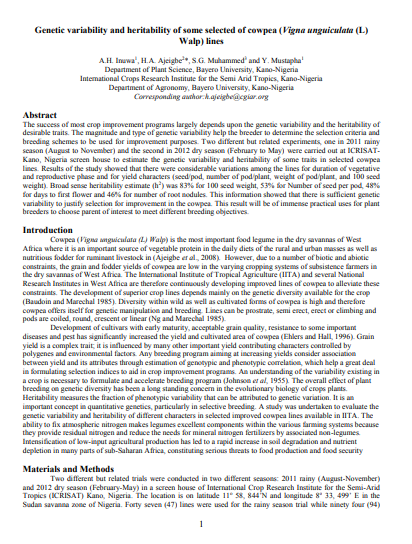Genetic variability and heritability of selected cowpea (Vigna unguiculata (L) Walp) lines
Summary
The success of most crop improvement programs largely depends upon genetic variability and heritability of desirable traits. The magnitude and type of genetic variability helps the breeder to determine selection criteria and the breeding schemes needed for improvement purposes. Two different but related experiments, one in the 2011 rainy season (August to November) and the second in the 2012 dry season (February to May) were carried out at ICRISAT-Nigeria’s screen house in Kano to estimate the genetic variability and heritability of some traits in selected cowpea lines. Results of the study showed that there were considerable variations among the lines for the duration of vegetative and reproductive phases, and for yield characteristics (seed/pod, number of pods/plant, weight of pod/plant, and 100 seed weight). Broad sense heritability estimates (h2) were 83% for 100 seed weight, 53% for number of seeds per pod, 48% for days to first flower, and 46% for number of root nodules. This information showed that there is sufficient genetic variability to justify selection for cowpea improvement. This result will be of immense practical value for plant breeders to choose parents of interest to meet their different breeding objectives.
Open resource Download resource Access resource on external site

